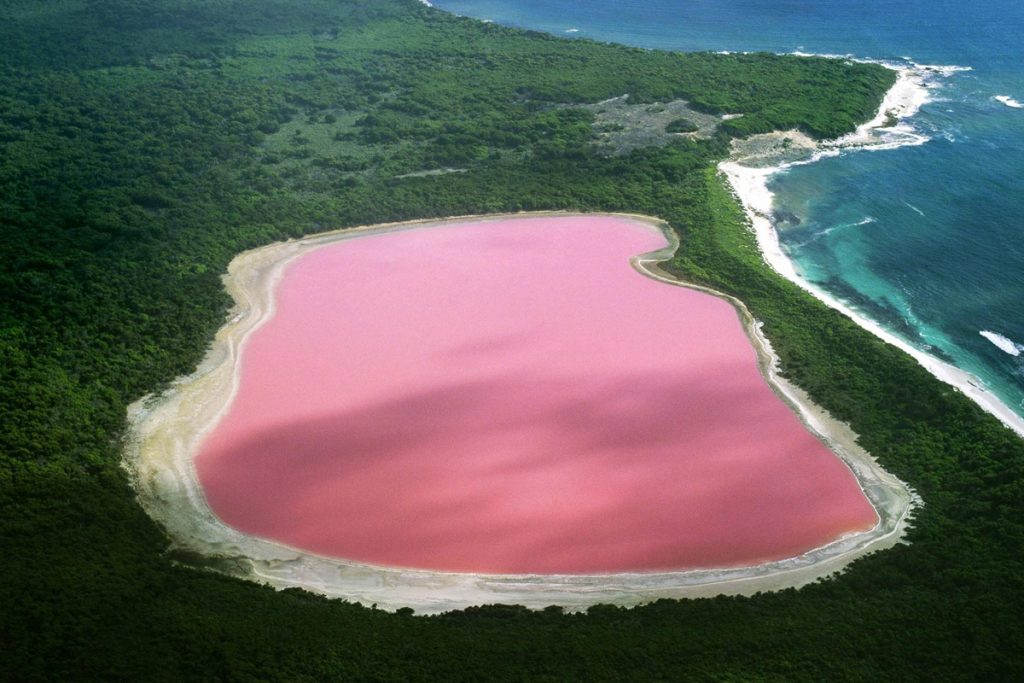Link About It: This Week’s Picks
Slower melting ice cream, double black holes, Australia’s bubblegum pink lake and more in this week’s look at the web


1. “Flaming” Auroras in Sweden
Capturing the Aurora Borealis is nothing new for nature photographers, but it’s possible nobody else has seen anything close to what astrophotographer Göran Strand did one night in Sweden. In a video called “Flaming Aurora,” Strand was able to catch the Northern Lights as they pulsated with neon energy, lighting up the entire sky at one point. The video is absolutely mesmerizing and features both time-lapse photography and real-time video, illustrating just how lively the sky was that night. Watch the full video on Slate.
2. Ice Cream That Melts Slower
These days most people prefer that scientists stay away from their food, but a team of researchers from the University of Edinburgh, Scotland have discovered something even the most all-natural eaters can appreciate: a way to keep ice cream from melting so quickly. By adding a naturally occurring protein called BsIA, they were able to bind the air, fat and water in ice cream together, giving it an ultra-smooth consistency and keeping it solid for longer. Though it’s still in the research and development phase, ice cream with BsIA could possibly be available within the next three to five years.
3. The Evolution of the THX Deep Note
In 1982, sound engineer Dr Andy Moorer created the now iconic THX Deep Note—a slow, building chord that alerts movie-goers that the theater’s sound system is THX-certified. Now, over 30 years later, THX and Moorer have released “Eclipse,” an updated version of Deep Note except this time Moorer was able to shape it in the way he first envisioned thanks to new feats in technology. By adding 40 new layers to the piece and choreographing the way it moves around the room, THX promises audiences “an epic sensory journey unlike anything they’ve experienced before.” Watch an exclusive interview with Moorer on Gear Patrol.
4. Scientists Find a Double Black Hole
After carefully studying data from the Hubble Space Telescope, scientists are convinced that the closest quasar to Earth (about 600 million light-years away) contains a double black hole at its core. The larger of the pair is roughly 150 million times the size of our sun, while the smaller black hole is four million times larger. Eventually, the two black holes will swirl into each other, possibly leading to some type of intergalactic phenomenon. Luckily, that’s not predicted to take place until a few hundred thousand years from now.

5. Each Time Wes Craven Reinvented Horror
More than just a director, Wes Craven—who died on Sunday at the age of 76—reinvented the horror genre each time he embarked upon a new film. Beginning his career with “The Last House on the Left,” Craven discarded any notion of a typical horror film by using ultra-realism and grainy footage to shock viewers and turn stomachs. After Hollywood began replicating his style, Craven pivoted; introducing Freddy Krueger to the world in the blood-soaked slasher film “The Nightmare on Elm Street.” His last major turn came in the form of “Scream,” a film that spoofed the then stagnant nature of horror with clever, yet terrifying, satire.
6. Australia’s Bubblegum Pink Lakes
The Great Barrier Reef may be one of the seven natural wonders of the world, but Australia’s got another natural wonder that might even be more spectacular. Located in Western Australia is a lake that looks as if it’s been filled to the brim with Pepto-Bismol. The out-of-this-world body of water—named Lake Hillier—might seem man-made and even toxic, but its bubblegum pink color is actually all-natural. Scientists have studied its composition, and, so far, they’ve attributed the pink color mostly to an algae that produces a reddish beta-Carotene in salty waters. Lake Hillier is off-limits to visitors but you can swim in other pink lakes nearby.
7. NASA Mimics Mars on Earth
Three men and three women have just begun a year-long period of isolation atop Hawaii’s Mauna Loa volcano in order to test how a mission to Mars might affect the human psyche. Organized by NASA and the University of Hawaii, the long-term test will force the volunteer crew to live as if they’re on the red planet; they’re only allowed to leave their small dome once a week, space suits are required to step outside and communications with the team are delayed in order to mimic the distance between Earth and Mars. Water and food will also be limited to a supply that’s Mars-proof.
8. Why Men Mistake Politeness for Flirtation
In the latest of their cute and informative videos, Science of Us explains why heterosexual men often mistake women’s politeness for flirtation—and it’s because of those pesky caveman instincts. Sexual misperception is common (90% of women in the US come across this issue) and has to do with “error management theory” which means men don’t want to risk missing an opportunity to procreate. It doesn’t work the other way around though—the exact opposite, in fact. Science of Us is quick to point out though, “Just because a phenomenon exists, does not make it OK.”
Link About It is our filtered look at the web, shared daily in Link and on social media, and rounded up every Saturday morning.











